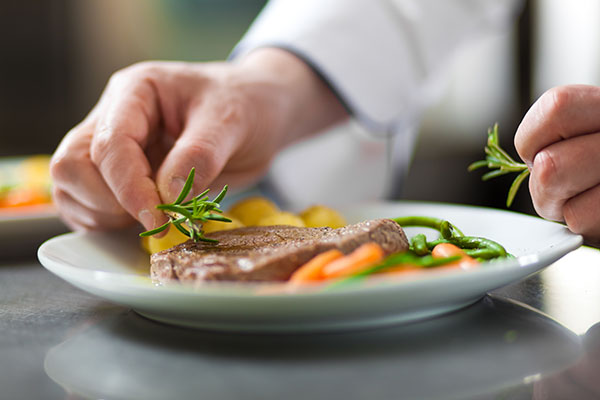Baum+Whiteman predicted 2021’s Hottest Food & Beverage Trends In Restaurants & Hotels

It seems absurd to wonder if kalettes will be next year’s hit vegetable, or whether square plates are still trendy when many restaurants are serving on paper. Amid swirling economic and social upheavals, Baum+Whiteman’s 2021 trends report will concentrate more on big changes in how we’ll eat in 2021 … and where. The material is presented in an abridged form.

1. Dining Will Be Different in 2021. And Beyond
We should expect radically reduced human interaction between customers and servers, and even among tablemates. Apart from staying alive, restaurants’ mammoth challenge in 2021 will be to somehow re-invent a warm, happy social experience.
2. Expect Far Fewer Restaurants. Why Is That Good?
It’ll 2022 before fast food/drive-thru/delivery restaurants fully recover and 2024 or later before sitdown restaurants prosper. The upshot, eventually, should be higher menu prices charged by fewer restaurants.
3. Say Bye-Bye to Printed Menus
Learn to tolerate those dreaded QR codes on restaurant tables. Restaurants save printing costs and get better accuracy of orders hitting the kitchen since the customer does the work bypassing the waiter. QR codes are good for touchless ordering and speedily settling your bill.
4. Your Favorite Chefs Aren’t Cooking There Anymore
With thousands of restaurants shuttered and more to come, star chefs are doing gigs. High-quality comfort food that’s priced right for these specific times.
5. How Permanent Are Behavioral Shifts in Eating Habits?
This is an enormous issue! Pre-Covid, American’s led fractured food lives, became a country of solo snackers and desktop diners. Perhaps two-thirds of families are eating more home-cooked meals. Snacking is up, too, a mechanism for coping with boredom, but those snacks increasingly are fresh fruit and healthful packaged goods.
6. Restaurant Brands in Home Kitchens
After forced shutdowns, thousands of restaurants pivoted to selling homemade pantry items and sweet goods, and even opening their own bakeries. That trend accelerates in 2021 because operators love the incremental revenue, and these items represent brand extensions to existing businesses. Recognizing that the Covid bump in online ordering is here to stay, it’s increasingly easy for restaurants to grab extra sales along with regular meal orders and now that online booze ordering has spread, throw in a bottle of wine (possibly private label) where regulations have loosened.
7. Global Adventures for the Hunkered
While avoiding public spaces, home cooks will seek culinary thrills by exploring exotic ingredients from faraway places. They’ll be shopping locally but eating globally.
8. African and Afro-American Cooking
We’ll also see, in 2021, a bumper crop of Black chefs’ cookbooks, renewed focus on ingredients of Southern cookery, and an exploration of the cuisines of West Africa.
9. Diet of the Year: Flexitarian, with the Edge on Veg
Large numbers of consumers are convinced these processed products are better for their health and better for the environment. McDonald’s has trialed an all-vegetarian menu in Hong Kong based on a plant-based Spam. KFC is adding alt-chicken nuggets and hamburgers at restaurants in China. And famed chef Heston Blumenthal is using (and backing) Fable - a shiitake-based substitute in some braised meat dishes.
10. Immunity Is the New Sustainability
There’s a realignment regarding health and sustainability. “Immunity” is the new buzzword for sustaining the body … because consumers are avid about repelling viruses and other infectious assaults. We foresee menus highlighting many ingredients with healthy halos.
11. The New War on Waste
Now, the visible shock of Covid-induced hunger is spurring a two-front war on waste. At home, self-isolating families are cooking lots more. So they’re newly aware that wasting food is ideologically amoral and financially costly. Meanwhile, during the worst ravages of Covid, hundreds of hotels and restaurants are sending surpluses to food banks.
12. Whose Street Is it, Anyway? Bursting through Four Walls
Consumers have a new love for outdoor dining, especially when indoor sneezing can be (even psychologically) toxic. There’s pushback against restaurants leaping beyond their four traditional walls. Even advocates of urban street life discover that competition for curb frontage can be inflammatory when restaurants try to colonize public space.
Read more on: «FoodService» magazine